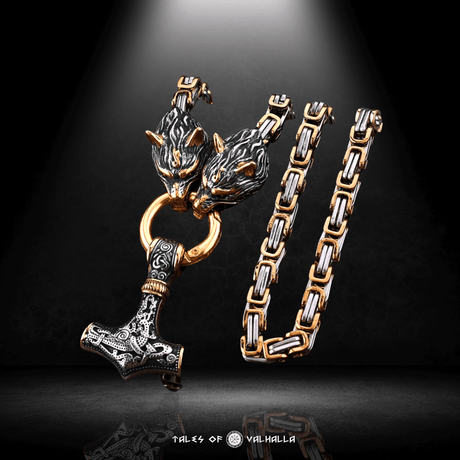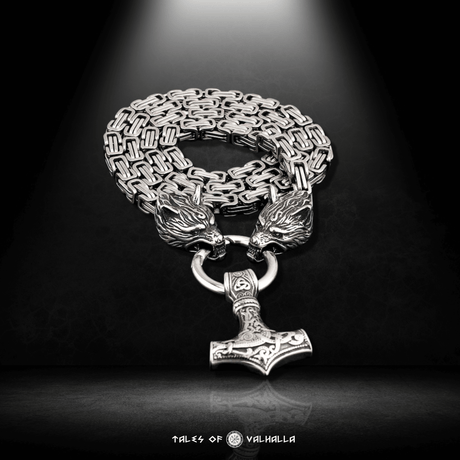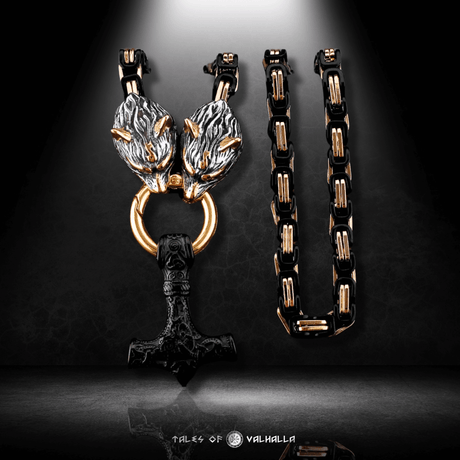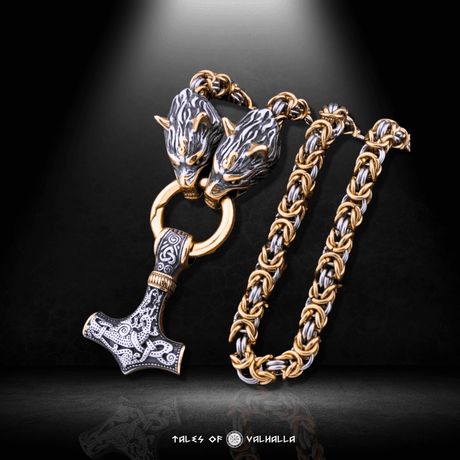In the realm of Norse mythology, few figures stand as tall and mighty as Odin, the Allfather. Revered as the chief of the Aesir gods, Odin's influence stretches across the cosmos, from the realms of men to the halls of the gods. One of the most potent symbols associated with Odin is his formidable weapon, Gungnir. This spear is not just a weapon of war; it embodies the very essence of Odin's power, wisdom, and authority. In this blog, we will delve into the intricate symbolism of Gungnir, exploring its origins, significance, and the profound impact it has had on Norse culture and beyond.
The Origins of Gungnir
Gungnir, which means "Swaying One" or "The Unerring One," is a spear of unparalleled craftsmanship. According to the myths, it was forged by the dwarves, master smiths of the Norse pantheon, who were commissioned by Loki. The spear was presented to Odin, who then endowed it with magical properties. It was said that Gungnir would never miss its mark and always return to Odin's hand, much like Thor's hammer, Mjölnir.
The creation of Gungnir is steeped in the rich tradition of Norse mythology, where dwarves are credited with creating many of the gods' most powerful artifacts. These magical items were often gifts or rewards, symbolizing the close and sometimes complex relationships between the gods and the dwarves. Gungnir's perfection in balance and its unerring aim made it the ultimate symbol of divine authority and martial prowess.
Odin's Symbolism

Odin, often referred to as the Allfather, is a god of many facets. He is a god of wisdom, war, poetry, and magic. Each of these aspects is represented in his symbols, with Gungnir being one of the most prominent. The spear symbolizes Odin's role as a warrior and a leader in battle. It also represents his ability to strike with precision and his relentless pursuit of knowledge and wisdom.
Gungnir, as a symbol of Odin, underscores his dual nature. On one hand, Odin is a god of war, leading the Einherjar (the chosen warriors of Valhalla) into battle during Ragnarok. On the other hand, he is a seeker of wisdom, willing to sacrifice himself to gain knowledge. This duality is reflected in the way Gungnir is used in myth: both as a weapon of immense destructive power and as a symbol of authority and order.
Symbol of Authority and Power
In many myths, Gungnir is depicted as a symbol of Odin's supreme authority. As the chief of the Aesir, Odin's rule is absolute, and Gungnir represents this unchallenged power. The spear's unerring nature is a metaphor for Odin's decisive and unwavering leadership. It is said that when Odin throws Gungnir, it signifies his commitment to a cause, ensuring victory through divine intervention.
The Norse symbol for Odin, often depicted as Gungnir, is also a testament to his strategic mind. Unlike Thor, who relies on brute strength, Odin uses his intellect and wisdom to outmaneuver his foes. Gungnir, with its perfect aim, symbolizes the calculated and precise nature of Odin's actions. It is a reminder that true power lies not just in strength but in wisdom and strategy.
The Ritualistic Significance of Gungnir

Gungnir was not only a weapon of war but also played a significant role in rituals and ceremonies. During sacrifices to Odin, particularly in times of war, it was customary to dedicate the first victim by throwing a spear over them, symbolizing their offering to Odin. This ritual highlights the deep connection between the spear and the god, emphasizing its role as a conduit for Odin's divine will.
In the context of war, Gungnir was a powerful talisman. Warriors would often inscribe runes on their weapons, invoking the spear's unerring aim and Odin's favor. This practice underscores the belief that Gungnir was more than just a physical weapon; it was imbued with the essence of Odin himself, a symbol of divine protection and might.
Gungnir in the Context of Ragnarok
Ragnarok, the end of the world in Norse mythology, is a cataclysmic event where gods and giants clash in a final battle. During this apocalyptic confrontation, Odin rides into battle wielding Gungnir. This scene is emblematic of Odin's role as a warrior god and leader of the Aesir. Gungnir, in this context, is a symbol of hope and defiance against the encroaching chaos.
The spear's presence during Ragnarok signifies the inevitable cycle of destruction and rebirth in Norse mythology. Odin's determination to face his destiny, armed with Gungnir, reflects the resilience and courage that are central themes in these myths. Even in the face of certain doom, Odin's spear represents the enduring spirit of the gods and their eternal struggle against chaos.
The Influence of Gungnir in Modern Culture

The legacy of Gungnir extends far beyond the ancient Norse world. Its symbolism has permeated modern culture in various forms, from literature and art to video games and movies. The image of the powerful, unerring spear continues to captivate imaginations, serving as a reminder of the enduring power of myth and legend.
In contemporary literature, Gungnir often appears as a symbol of ultimate power and authority. Authors and creators draw on the rich tapestry of Norse mythology to infuse their works with depth and resonance. The spear's association with Odin, a god of complex and multifaceted nature, allows for rich storytelling possibilities, exploring themes of wisdom, sacrifice, and leadership.
Conclusion
Gungnir, Odin's mighty spear, stands as a potent symbol of his power, wisdom, and authority. From its mythical origins to its enduring legacy, the spear embodies the essence of the Allfather. It is a symbol of Odin's dual nature as both a warrior and a seeker of knowledge, reflecting the intricate and multifaceted character of the god himself. Through Gungnir, we gain a deeper understanding of the symbolism of Odin, a testament to the enduring power of Norse mythology.






























































































